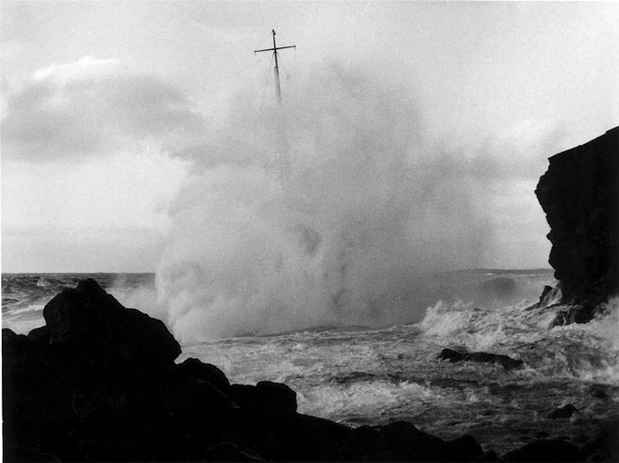"It's Not Yor Fault" Exhibition
Luhring Augustine Gallery

This event has ended.
It's Not Your Fault brings together works by nine Icelandic artists who share an ambivalent relationship to general interpretations of their historical and geographic background. While many of them call into question these influences on their identity and work, they do not evade the local tradition of storytelling and staging. Central to the exhibition is a project by the late artist, Birgir Andrésson (1955-2007), in which he researched old printed matter, fishing for stories and images of "Different People", vagrants of all descriptions. In Andrésson's own words, his was "an artist's humble attempt merely to shed vague light on the colorful soil and unique environment from which 'Icelandic culture' has sprouted forth." Intrinsic to Andrésson's research was storytelling and play, the interactive relationship of an artist and his audience, and a fascinating counterbalance of sincerity and irony. Drawing on these elements, visitors to the exhibition, It's Not Your Fault, canexpect to be confronted with inclement conditions, performative twists, and a search for the truth of fiction.
A performance by Ásdís Sif Gunnarsdóttir (b. 1976) provides the title of the exhibition. She participated in an open mic comedy night where she addressed an anonymous member of the audience, offering the consolation: "It's not your fault!" Together with a documentation of the performance, Gunnarsdóttir presents a new video installation where she sets forth performance as an abstract visual poetry. Brought up in the world of theater, Ragnar Kjartansson (b. 1976) creates layers of familiar references inspired by stage sets, show biz clichés, art historical genres and popular visual culture. His video installation, God, is an attempt to construct a moment of honesty while repeatedly singing the melancholic mantra, "Sorrow conquers happiness", in the midst of pink chiffon draperies. He also displays a newseries of paintings that capture the theatricality of the medium; it's performative and prop-like nature. The practice of Ásmundur Ásmundsson (b. 1971) is also rooted in performance. In a sound piece he performs a medley of popular tunes, entering the uncomfortable zone of embarrassment which in recent years has been his site of research. In another work, a video, he sings to the audience with his "friends from the deep, deep blue", evoking the torn relationship that Icelanders have with the mammals of the sea. Not altogether unfamiliar with humiliation, Magnús Sigurdarson (b. 1966) poses as a stranded alien on Miami Beach in the photo series, The Stranger, bringing to mind Camus' novel through the filter of the indie-group, The Cure. In a dramatic vitrine display, Storm, Sigurdarson aspires to capture and display the Arctic Gene.
Continued
While some of the artists in the exhibition engage themselves directly in performance, others use staging and theatrical tools. The stage of the locally renowned club, "Hotel Iceland", is the focal point in Hrafnhildur Arnardóttir's (b. 1969) work Lonely where she exposes its dated gimmickry. Her Hairy Moon is a mysterious object that combines Wagnerian qualities with the disco ball. Unnar Örn (b. 1974), on the contrary, ignores myths and fantasy in his search for the origin of meaning, his interest lying instead in forgotten archives. Like an investigator considering the evidence of a crime, he presents a collection of information, such as trivial objects, that contest categorization in the Reykjanes Heritage Museum. With his roots in lyrical conceptualism, Haraldur Jónsson (b. 1961) is spot on in his research into themyth of Nordic melancholia. His landscape of Crumpled Darkness evokes a geological reading of the term "fault" in the exhibition's title. He also displays Tunnel, an object of fantastic nature - two sandwiched mirrors create the longest and the shortest tunnel in the world. The Icelandic artists in the exhibition, It's Not Your Fault, set the stage for a polyphony of stories, playing with the tropes of remoteness, gloom and distance often related to the island in the North, while considering the immediate proximity of their work to the viewer. A glacial landscape is trapped in Katrín Sigurdardóttir's (1967) large pedestal, only visible to the audience if they mount it and stick their head through a hole in the ground. Her minimal sculpture turns into a stage on which the viewer is put on display.
Markús Thór Andrésson (b. 1975) is a freelance curator and writer living in Berlin and Reykjavik.
Media
Schedule
from June 28, 2008 to August 08, 2008